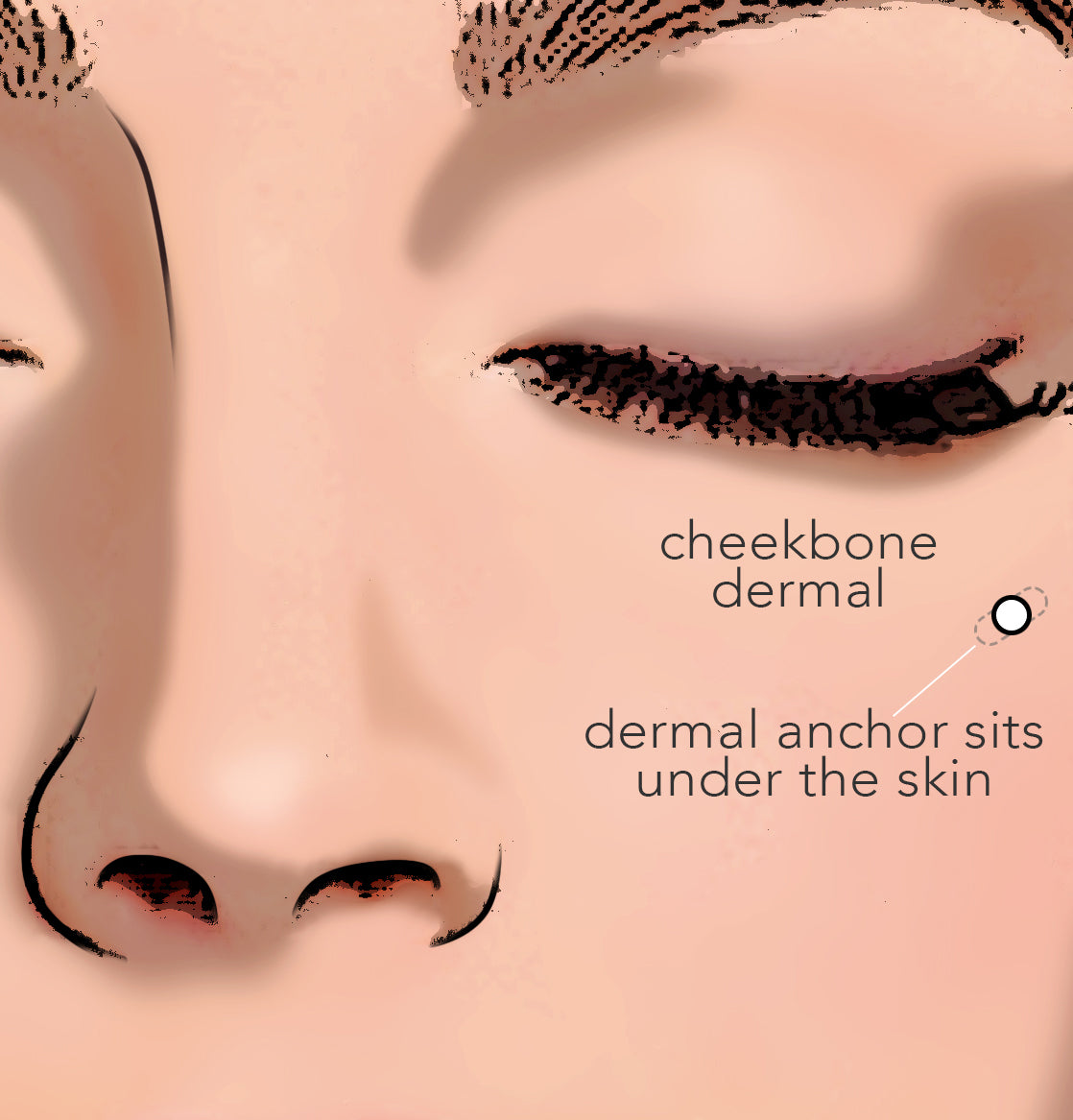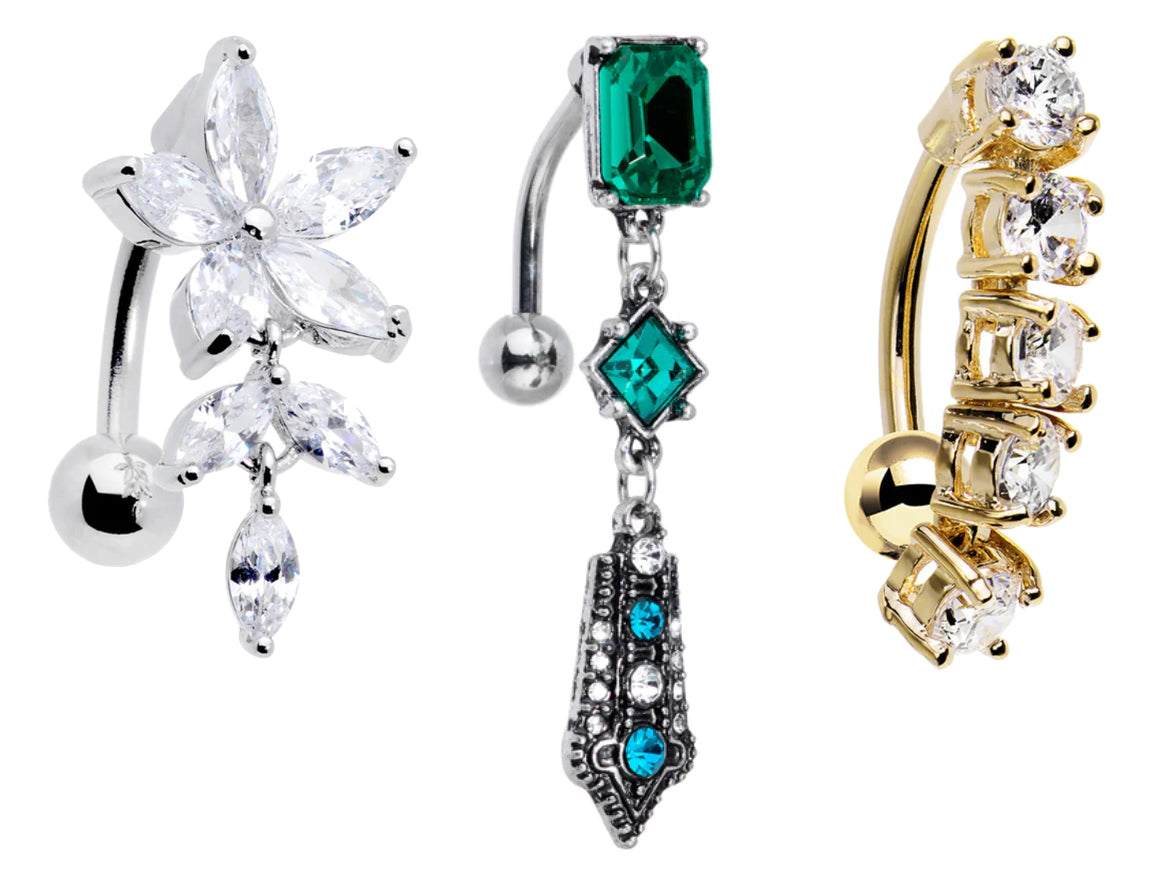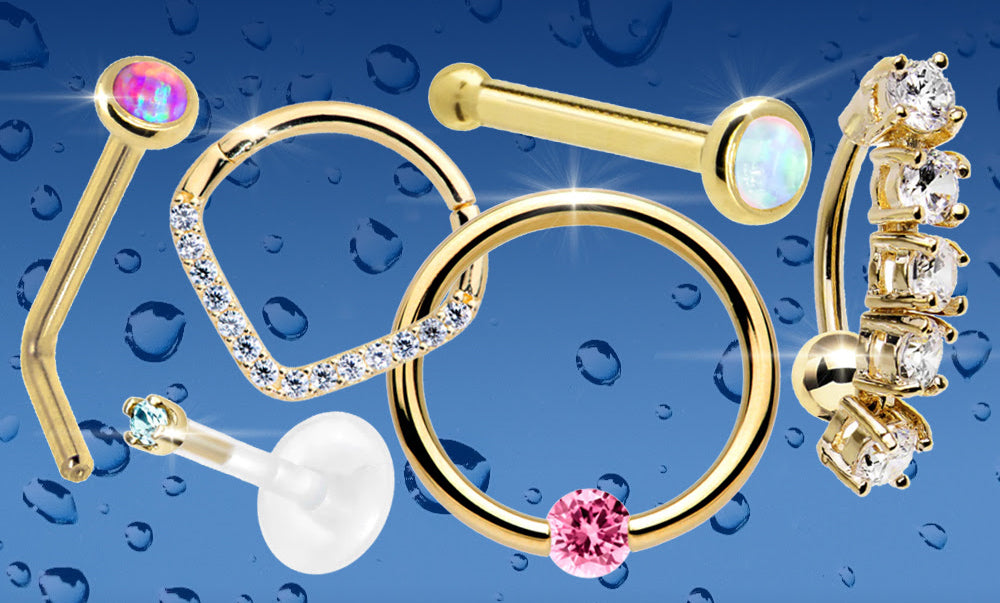When most of us think of the word "piercing," you think of a barbell or a stud that goes through a part of the body in such a way that the end can be "capped off." For example: nose rings can be held on through the nostril; stud earrings may have various kinds of back ends, and stretched ears might have an o-ring holding them on.
Have you ever seen a piercing that seems to be floating in someone's skin? Think a cheek piercing; a chest piercing; a piercing at the nape of your neck; or even your back or hips? These parts of the body certainly don't allow for a needle to go through the anatomy... So how exactly do these piercings exist? These unique piercings are one of two special kinds of piercings: you're looking at either a surface piercing or a dermal piercing. They look almost identical and appear in lots of the same places on the body, but they are actually two very distinct piercings.
If you've been considering a piercing in a unique part of your body, it's important to understand exactly what you're asking for when you head to the local piercing shop. While your piercer will probably be able to decipher exactly what it is you're looking for, it's also important for YOU to understand the distinction between the two piercing types. Each comes with its own list of potential complications... Be sure to read up on these two distinct piercing types so you know exactly what to expect when you head in for your first dermal or surface piercing.
Dermal Piercings
When you see a piercing with no "exit point," odds are you're looking at a dermal piercing. This piercing is defined by its jewelry type, the "dermal anchor" which can take a few different forms. Dermal anchors are inserted beneath the dermal layer of your skin (hence the name). Dermal jewelry is anchored by a base that sits beneath the skin, leaving the top exposed for a decorative jewelry end. Dermal anchors may have a round base or a footed (bar-like) base. Both of these bases may come with small holes in them - as your piercing heals, your tissue will grow through these holes, helping to keep your dermal snug and in-place.

Dermal piercings can be inserted with either a needle or a biopsy punch. With the biopsy punch method, a small swath (punch) of skin is removed to allow for space for the dermal anchor to sit. This is typically the preferred method, as it is less painful overall and tends to reject less often than other methods. The needle method for dermal piercings is also viable. Using a piercing needle, your piercer will create a space for the dermal anchor underneath the dermal layer of skin. Keep in mind that you may have to use this method depending on your state/country of origin and its individual laws.
The dermal punch is less painful than a piercing needle, and it often reduces the risk of rejection, but in some states, this method is illegal unless conducted by a medical professional, so be sure to check the laws in your home state/country before you decide on one method over another.

What's the difference between a dermal and a surface piercing?
There is one main difference between dermal piercings and surface piercings - surface piercings have an exit point. This one distinction has lots of ramifications on how the piercing is performed and also what jewelry can be worn in a surface piercing. Since the surface piercing has an exit point, it means you won't be able to wear a dermal anchor in your surface piercings. Instead, these piercings are typically fitted with a surface bar, depending on the location of your piercing. During a surface piercing procedure, the piercer will pinch the skin and stick the needle through the pinched area. If you are using a surface bar for a piercing, staple-shaped surface bar is most appropriate.

Surface piercings and dermal piercings come with a significantly higher chance of rejection. They tend to suffer from snags - whether it's on a towel, a blanket, or clothing, these unfortunate incidences tend to set your piercings off on a journey of migration or rejection. This is why piercers will often recommend flat ends for the healing period, and then if you want to change to something more stylish, you can return to them for that. It's also important to note that, while a dermal piercing can often be replaced as soon as the piercing site has healed, a surface bar might see more complications due to scarring. In fact, surface bars seem to be making their way out of use as the near-inevitable eventual rejection rate means that a dermal will leave far less scarring than a larger bar and can be re-performed within a few weeks of removal. Also, one can emulate the look of a surface bar with a simple pair of matching dermals.

While you may find that you have an increasingly difficult time finding reputable piercers who continue to use surface bars, dermals are only increasing in popularity. However, one must keep a close eye on them for the first signs of rejection. If your dermal is suddenly no longer flush with the skin or looks red, or in some other way abnormal, it is important to return to your piercer and have them evaluated. They need to be removed before rejection becomes advanced in order to minimize scarring. Despite being long-term temporary piercings, dermals and surface piercings can be a fun and worthwhile investment in your body piercing journey. Their ability to be placed in places where a regular piercing is impossible, means that the options are nearly endless. Happy piercing!






